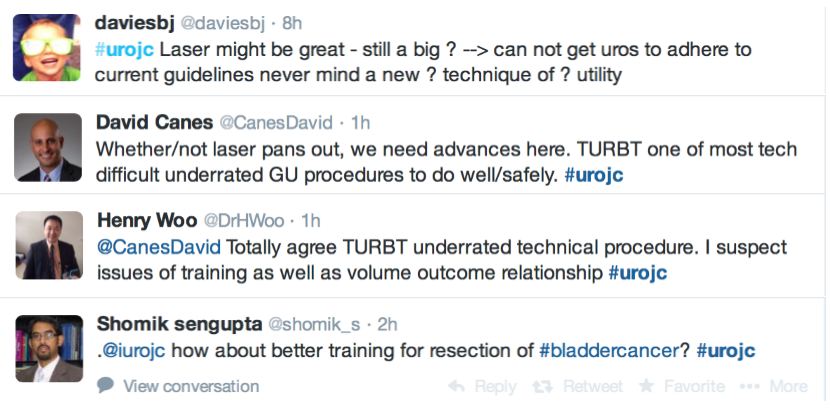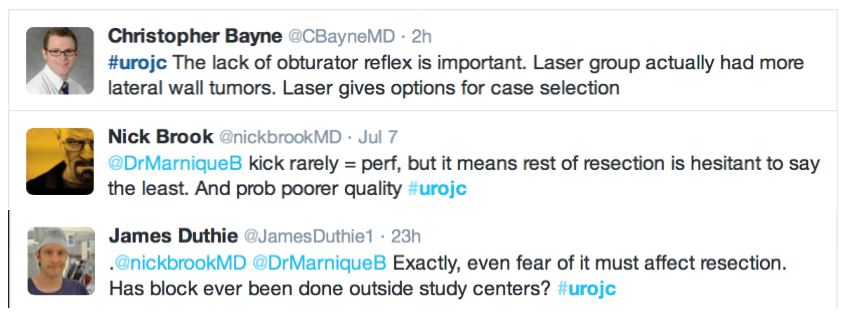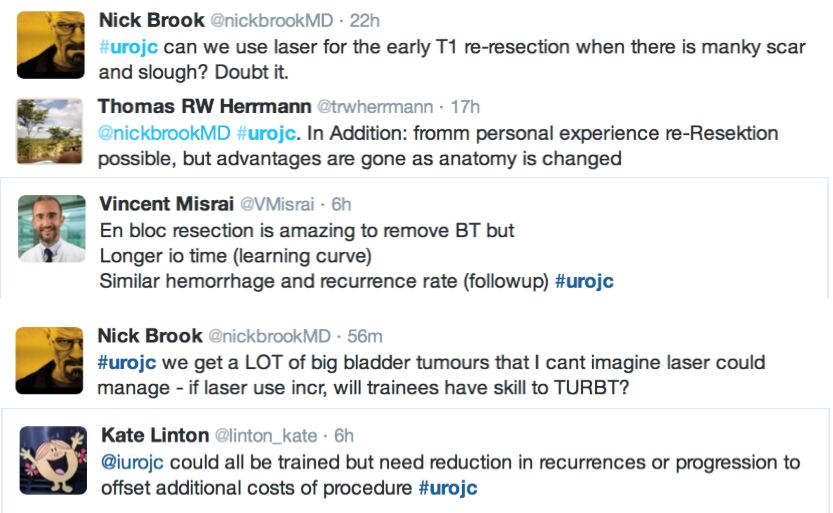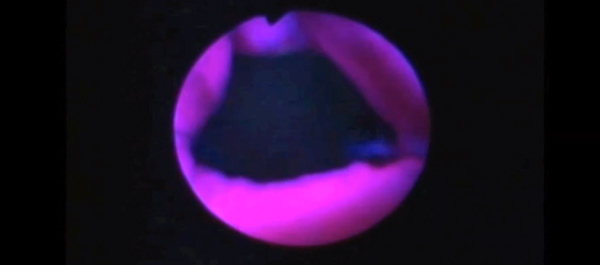Posts
Article of the week: Critical analysis of a multicentric experience with holmium laser enucleation of the prostate for BPH
Every week, the Editor-in-Chief selects an Article of the Week from the current issue of BJUI. The abstract is reproduced below and you can click on the button to read the full article, which is freely available to all readers for at least 30 days from the time of this post.
There is also an editorial written by a prominent member of the urological community. Please use the comment buttons if you would like to join the conversation.
If you only have time to read one article this week, we recommend this one.
Critical analysis of a multicentric experience with holmium laser enucleation of the prostate for benign prostatic hyperplasia: outcomes and complications of 10 years of routine clinical practice
Javier Romero-Otero*†‡, Borja García-Gómez*†, Lucía García-González*‡, Esther García-Rojo*, Pablo Abad-López*, Juan Justo-Quintas†, José Duarte-Ojeda*‡ and Alfredo Rodríguez-Antolín*
*Urology Department, Grupo de Investigación Salud Integral del Varón imas12, Hospital Universitario 12 Octubre, †Hospital Universitario HM Montepríncipe, and ‡Hospital Universitario La Luz, Madrid, Spain
Abstract
Objective
To assess the perioperative outcomes of holmium laser enucleation of the prostate (HoLEP) in real‐life practice and investigate the factors influencing the safety and effectiveness of the technique.
Patients and Methods
Critical analysis of patients with benign prostate hyperplasia (BPH) treated with HoLEP over 10 years of routine practice in three hospitals. Analysed variables included: preoperative characteristics (prostate size, active antiplatelet/anticoagulant therapy, blood parameters. prostate‐specific antigen (PSA) level, maximum urinary flow rate [Qmax], and International Prostate Symptom Score [IPSS]), intraoperative variables (operation time, concomitant removal of bladder calculi, and complications), early postoperative outcomes (change in blood parameters, catheterisation time, and hospital stay), and 12‐month follow‐up outcomes (change in IPSS, PSA level, and Qmax).
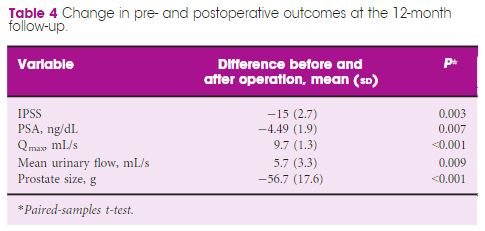
Results
The analysis included 963 patients, aged 48–91 years, with a mean (range) prostate size of 91 (35–247) mL. The mean (sd ) operation time was 77 (29) min, and the hospital stay and catheterisation time were 4 (2) and 1.3 (2) days, respectively. In all, 56 patients (5.6%) required concomitant removal of bladder calculi and 36 (3.7%) were converted to open prostatectomy or transurethral resection of the prostate due to intraoperative complications. Patients had a significant decrease in haemoglobin and haematocrit, but no differences were seen between patients with and without anticoagulant/antiplatelet therapy and those with prostates ≥ and <100 mL. The concomitant removal of bladder calculi and having a prostate ≥100 mL resulted in a longer operation time, but did not influence the safety and effectiveness outcomes.
Conclusions
HoLEP is suitable for real‐life patients with BPH, irrespective of the presence of active treatment with anticoagulant/antiplatelet, bladder lithiasis or a prostate ≥100 mL.
#UroJC July 2014 – Is there a place for laser techniques in our current schema of bladder cancer diagnosis and management?
This month’s International Urology Journal Club (@iurojc) truly engaged a global audience with participants from ten countries including author Thomas Herrman (@trwhermann) from Hannover, Germany. A landmark 2000 followers was reached during July, nearly two years since @iurojc’s conception in late 2012. In fact, since this time nearly 1100 people have participated in the journal club from around the world.
Bladder cancer was up for debate for the first time this year and @iurojc trialled the discussion of two complementary articles recently published online ahead of print in the World Journal of Urology. The first article provided an update of the current evidence for transurethral Ho:YAG and Tm:YAG in the endoscopic treatment of bladder cancer, and the second was a randomised controlled trial (RCT) comparing laser to the gold standard transurethral resection of bladder tumour (TURBT). Authorship groups were from Germany and China respectively; our Chinese authors unfortunately unable to join the dialogue due to restriction on all twitter activity in the country.
Initial conversation focussed on the methodology, results and limitations of the RCT, however this soon extended to a more general discussion around the current difficulties with the diagnosis and management of bladder cancer and the pros and cons of using laser for this purpose. Key themes debated over the 48-hour period included the importance of accurate staging, current standards of TURBT, advantages of en bloc resection and the learning curve, cost and usefulness of laser technology.
Both studies reiterated one of the major goals outlined in the EAU guidelines for non-muscle invasive bladder cancer (NMIBC), to achieve correct staging with inclusion of detrusor muscle and complete resection of tumours. This is important in limiting second resection and consequently has a resulting cost offset. In the review article, only 3 studies commented on staging quality and another two commented that laser was suitable for staging but did not specify if detrusor muscle was identified.
@ChrisFilson and @CBayneMD expressed their concern over the RCT by Chen and Colleagues
@linton_kate astutely pointed out another limitation
and author of the review article @trwherrmann summed this up nicely
In the RCT by Chen et al. there was a significantly greater number of pT1 tumours detected with laser than TURBT, the authors suggested this might be due to better sampling. It remains unclear if this would impact on management and this did not enter the arena for discussion during this @iurojc.
Many argued that TURBT techniques and practices should be optimised before newer techniques are introduced.
‘En bloc’ was touted as the new trendy word in endourology. EAU guidelines recommend en bloc resection for smaller tumours. The articles suggested that en bloc resection of bladder tumours should provide more accurate staging however conclusive data is missing to substantiate this in the current literature.
@DrHWoo discussed potential advantages of the laser technique
@linton_kate pointed out that en bloc resection is not limited to the laser technique
Further to this, the lack of obturator nerve reflection with laser was emphasised in the RCT. Obturator kick was noted during TURBT in 18 patients and none during laser resection, however none of these patients suffered bladder perforation. The significance of this was debated and usefulness of obturator block in this context discussed.
The pendulum seemed to the swing out of favour of laser during the discussion, with several limitations outlined including reduced ability for re-resection, cost and the presence of a learning curve.
Regarding additional cost, the host rebutted
The flow of academic dialogue was interrupted midstream (pardon the pun) by a light-hearted discussion around the ergonomics of TURBT.
Below are some of the key take home messages that arose from the usual culprits in this month’s @iruojc discussion
Kindly author @trwherrmann invited us to his upcoming en bloc resection workshop. Keep an eye out for this.
@iurojc would like to thank Prostate Cancer Prostatic Diseases who have kindly provided the prize for this month which is a 12 month on line subscription to the journal. @nickbrookMD’s made efforts to sway the vote his way.
Whilst usually the Best Tweet Prize is reserved for some incisive comment, the repeated complaints from @nickbrookMD for his failure to ever win the Best Tweet prize has seen for the first and final time that the @iurojc has bowed to pressure. Congratulations to @nickbrookMD for finally having made it with the above tweet.
If you haven’t tuned into @iurojc, follow future journal club discussions via the hashtag #urojc, on the first Sunday/Monday of each month.
Dr Marnique Basto (@DrMarniqueB) is a USANZ trainee from Victoria who recently completed a Masters of Surgery in the health economics of robotic surgery and has an interest in SoMe in Urology.
Outpatient laser ablation of NMIBC
Outpatient laser ablation of non-muscle-invasive bladder cancer: is it safe, tolerable and cost-effective?
Kathie A. Wong, Grace Zisengwe, Thanos Athanasiou*, Tim O’Brien and Kay Thomas
The Urology Centre, Guys and St. Thomas’ NHS Foundation Trust, and *Surgical Epidemiology Unit, Department of Surgery and Cancer, Imperial College London, London, UK
OBJECTIVES
• To evaluate the safety, tolerability and effectiveness of outpatient (office-based) laser ablation (OLA), with local anaesthetic, for non-muscle-invasive bladder cancer (NMIBC) in an elderly population with and without photodynamic diagnosis (PDD).
• To compare the cost-effectiveness of OLA of NMIBC with that of inpatient cystodiathermy (IC).
PATIENTS AND METHODS
• We conducted a prospective cohort study of patients with NMIBC treated with OLA by one consultant surgeon between March 2008 and July 2011
• A subgroup of patients had PDD before undergoing OLA.
• Safety and effectiveness were determined by complications (In the immediate post operative period, at three days and at three months), patient tolerability (visual analogue score) and recurrence rates.
• The long-term costs and cost-effectiveness of OLA and IC of NMIBC were evaluated using Markov modeling.
RESULTS
• A total of 74 OLA procedures (44 white-light, 30 PDD) were carried out in 54 patients. The mean (range) patient age was 77 (52–95) years. More than half of the patients had more than three comorbidities. Previous tumour histology ranged from G1pTa to T3.
• One patient had haematuria for 1 week which settled spontaneously and did not require hospital admission. There were no other complications.
• The procedure was well tolerated with pain scores of 0–2/10.
• Additional lesions were found in 21% of patients using PDD that were not found using white light.
• At 3 months, the percentage of patients who had recurrence after OLA with white light and OLA with PDD were 10.6 and 4.3%, respectively. At 1 year, 65.1% and 46.9% of patients had recurrence.
• The cost of OLA was found to be much lower than that of IC (£538 vs £1474), even with the addition of PDD (£912 vs £1844).
• Over the course of a patient’s lifetime, OLA was more clinically effective, measured in quality-adjusted life-years (QALY), than IC (0.147 [sd 0.059]) and less costly (£2576.42 [sd £7293.07]).
• At a cost-effectiveness threshold of £30 000/QALY, as set by the National Institute for Health and Care Excellence, there was an 82% probability that OLA was cost-effective.
CONCLUSIONS
• This is the first study to demonstrate the long-term cost-effectiveness of OLA of NMIBC.
• The results support the use of OLA for the treatment of NMIBC, especially in the elderly.









